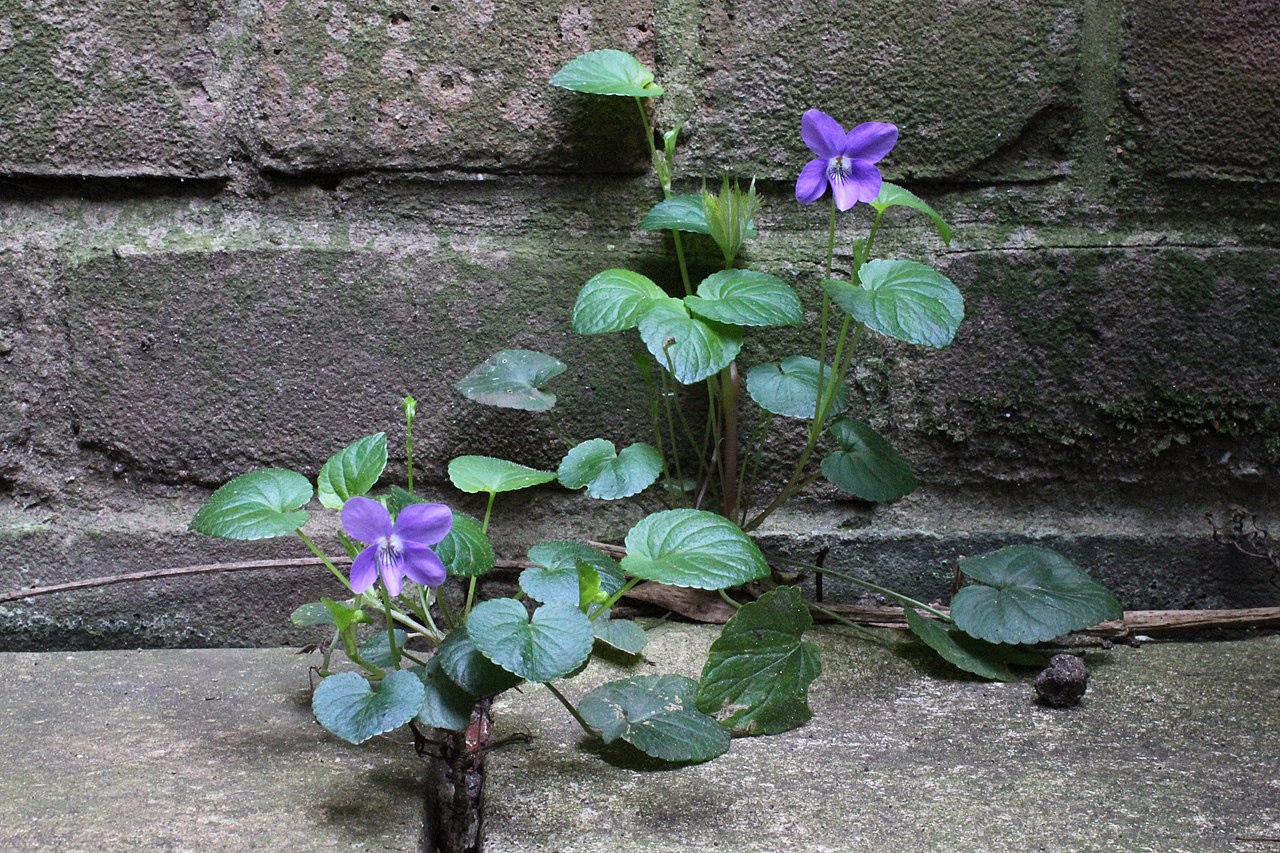
14 Apr Common Dog Violet
Posted at 01:49h
in Field Notes
Common Dog Violet (Viola riviniana)
What parts can I eat? The entire plant is edible. Mildly flavored, the flowers and leaves can be eaten raw on sandwiches, in salads or as a garnish. On the stove, you can add them to soup as a mucilaginous thickener. They have also been used to make tea.
Don’t overdo it; In large quantities the plant’s saponins can give you an upset stomach. Saponins are more highly concentrated in the roots.
What does it look like? Up to 8 inches tall and 20 inches wide. A perennial, its leaves are dark green, heart-shaped, smooth and nearly hairless with uniform, shallow indentations around the edges. It produces multiple violet-colored flowers from early to mid-Spring. Similar to a garden pansy, the lower “lip” petal is prominently veined, and the above four petals are joined. You’ll notice a notched, lighter-colored spur that protrudes behind the flower. The plant is able to produce “cleistogamous flowers” – flowers that do not open but self-fertilize. We also enjoy numerous native violets in the Pacific Northwest, including Early Blue Violets (Viola adunca.) Though not itself at risk, this plant is a major food source for the endangered Oregon Silver Spotted Butterfly. To avoid harvesting natives, please only gather violets that are growing in disturbed areas at low elevations, such as lawns, sidewalks or waste lots.
Are there any poisonous look-alikes? Some sources cite Lesser Celandine (Ficaria verna) as a look-alike, but I think that’s a stretch. While the leaves are somewhat similar, the flowers are not likely to mistaken for a violet.
Where is it from and where can I find it? Dog violet was introduced from Eurasia and northwest Africa. Thriving in most soil types, you’ll find it in woodland edges, pastures, grasslands and even parking lots. It does not grow in wet soils.
Any interesting folklore?
-
riviniana is commonly called dog violet because it is scentless, unlike many other violets.
-
Romans thought drinking wine made from violets would prevent them from becoming drunk. After a heavy night of drinking, they wore wreaths of violets to alleviate the consequences.
-
Napoleon gave violets to his wife, and they became his personal emblem. Once, while in exile, he told his friends he’d return when the violets bloomed in Spring. Henceforth, violets were used to determine who knew about his plan to return. If asked “do you like violets?” and you responded “Eh bien”, it meant you were loyal to Napoleon.
-
In Greek mythology, it was said that violets bloomed wherever Orpheus put down his lute.
How can I cook with this plant?
(Note that this method can be used to candy any delicate flower.)
Candied Violets
Ingredients:
30 violet flowers, stems attached
2 egg whites, beaten until foamy
3 Tbs powdered sugar
Method:
-
Beat the egg whites.
-
Using the stem, coat an entire flower in egg white, shaking off any excess.
-
Twirl the flower between thumb and forefinger while sprinkling powdered sugar over the flower (a sifter works best.)
-
Place the violet on a paper towel.
-
Repeat with the rest of the flowers.
-
Place your loaded paper towel/s uncovered on a shelf in your refrigerator for 24 hours.
-
Remove the flowers and let them sit at room temperature for another 24 hours.
-
Remove the stems with a scissors.
-
Transfer the candied violets to an airtight container and store them at room temperature for up to 2 months.

